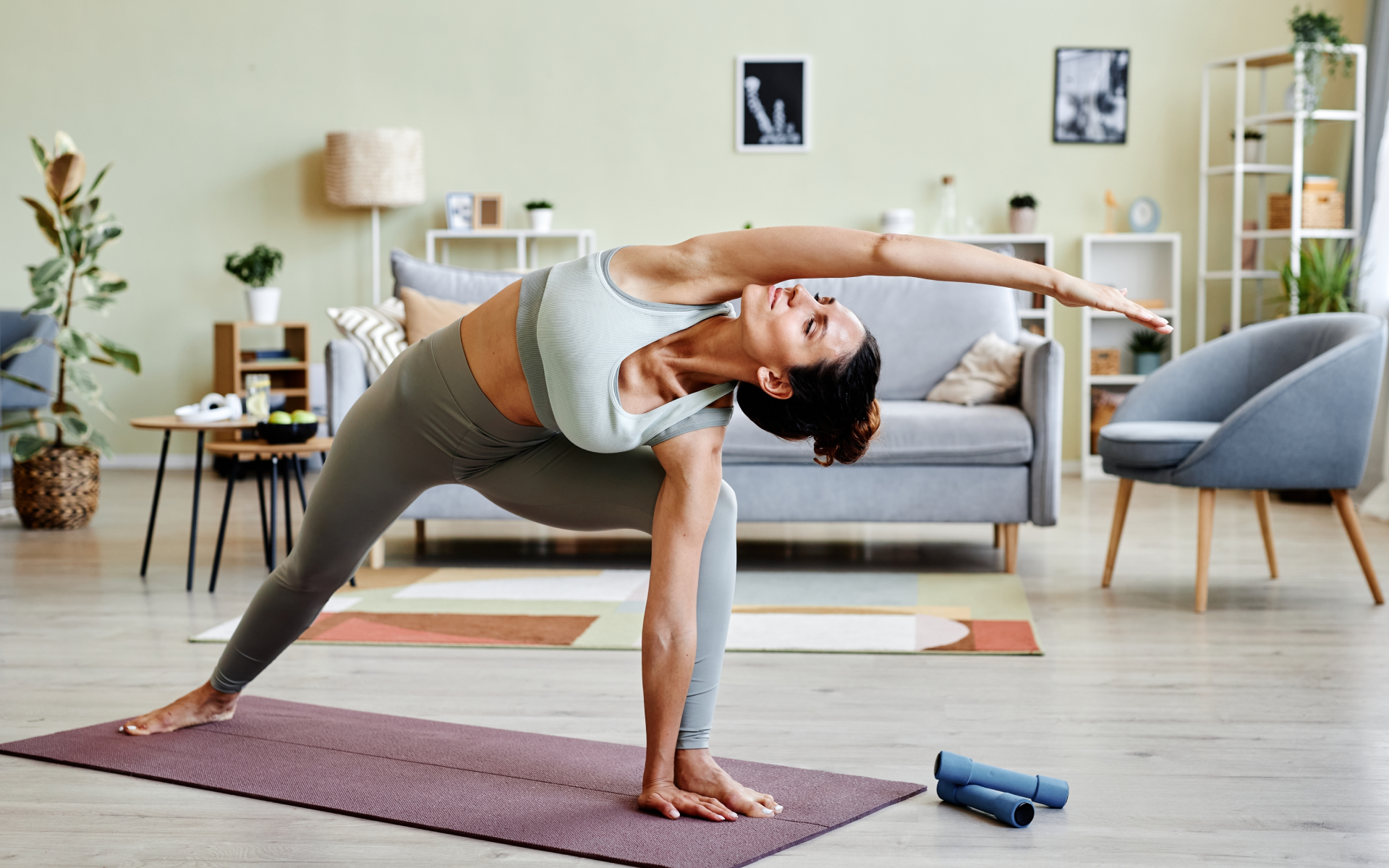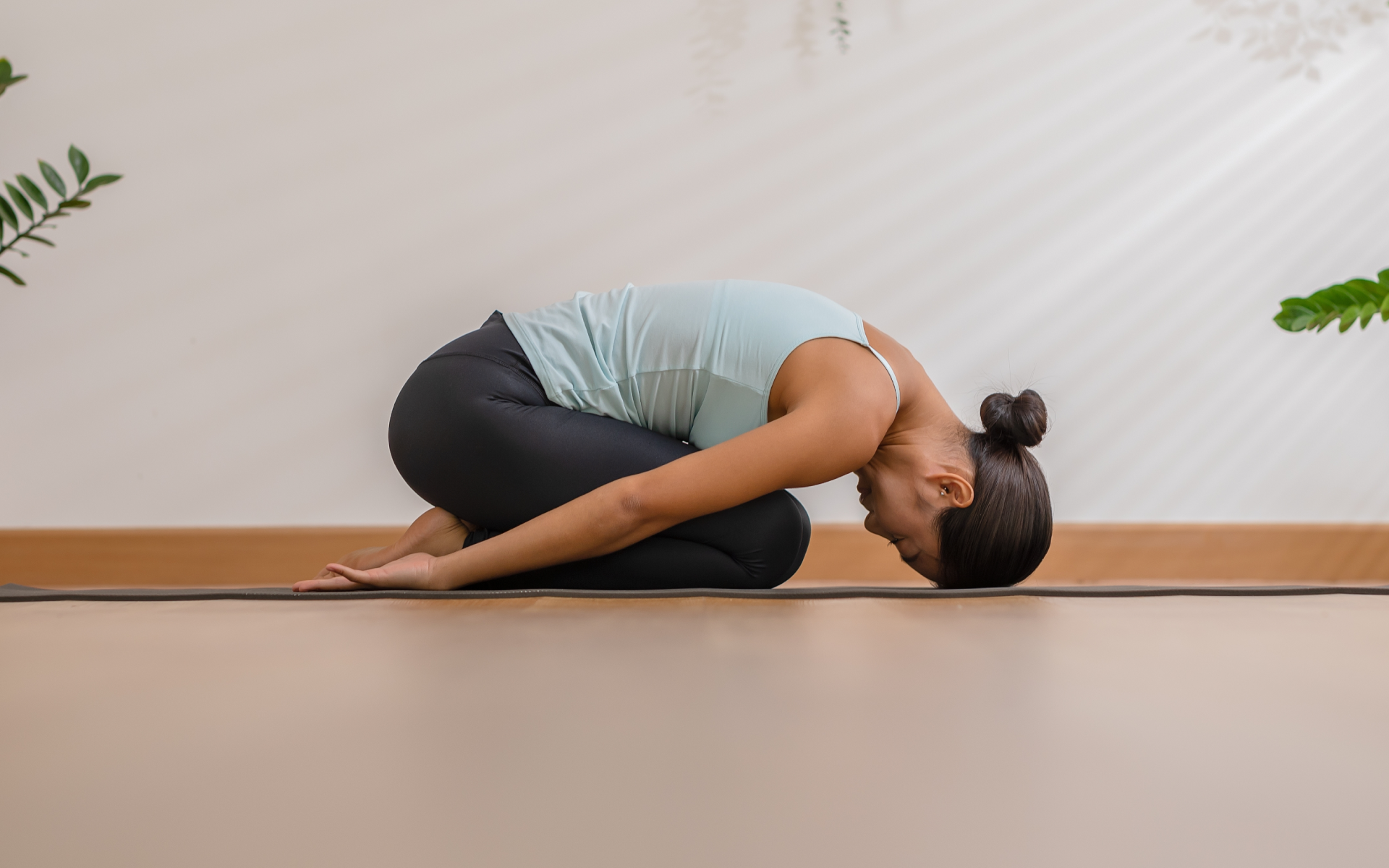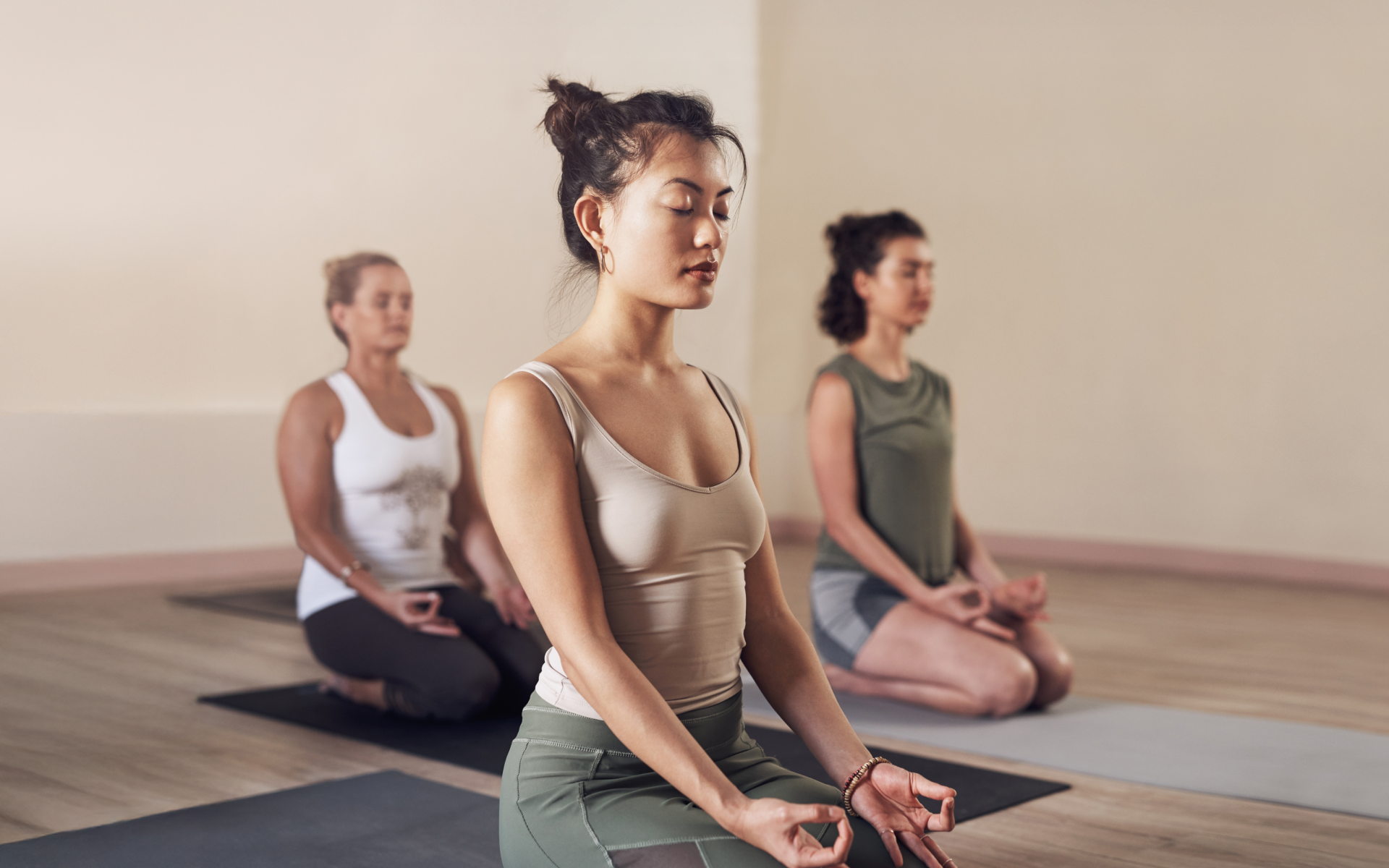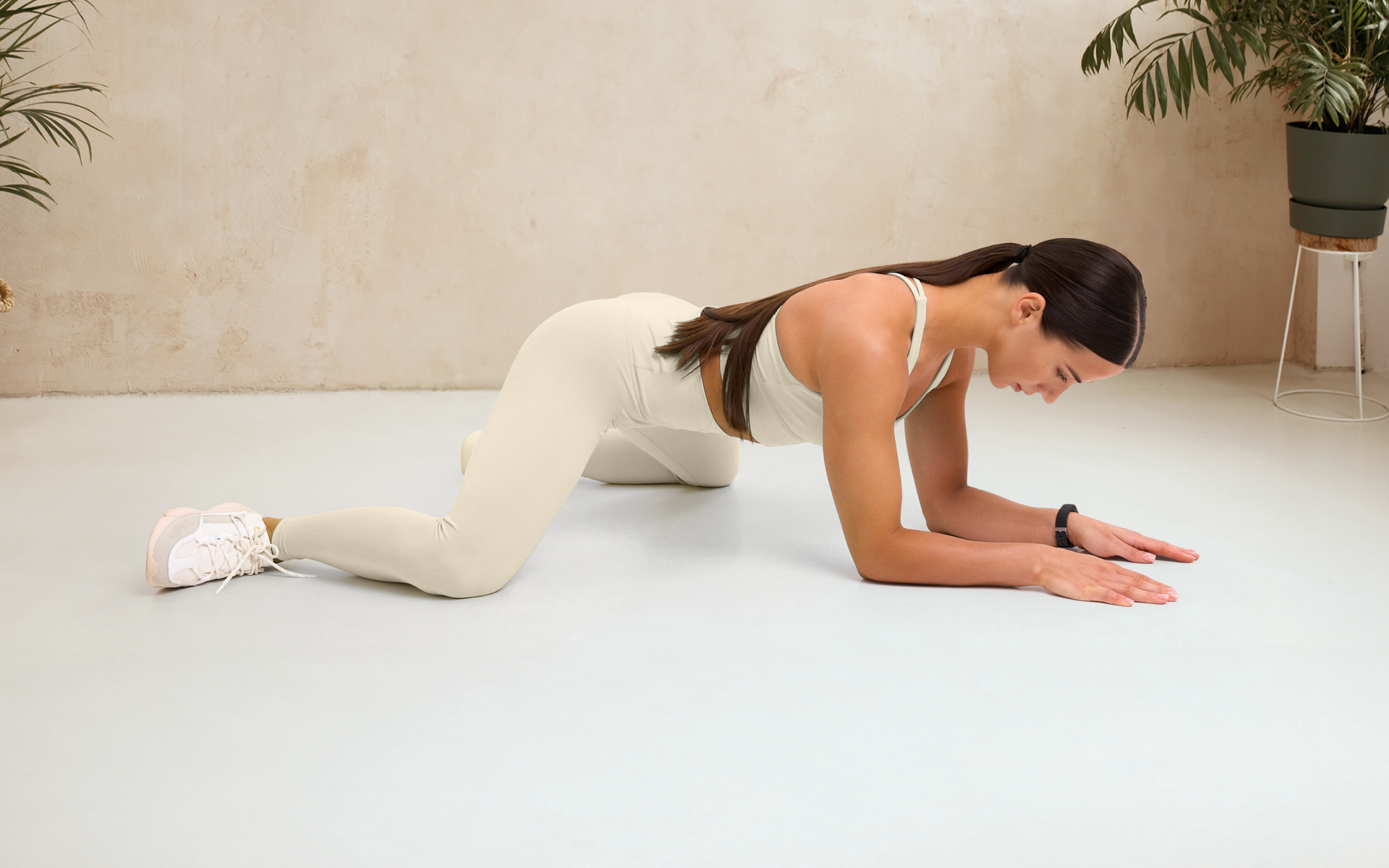Somatic this, somatic that – the word “soma” is the most recent addition to an ever-growing list of buzzwords in the health and wellness industry.
At its very core, “soma” simply refers to the “body” of an organism. In the context of somatic therapy, somatic is understood to be the living body component of the mind-body connection. When it is used in wellness circles, it is emphasizing the importance of including the body as an element deeply interconnected with our mental and emotional state.
Today, we focus on somatic approaches to improve flexibility (somatic flexibility techniques), a transformative approach to improve flexibility and relaxation by harmonizing the body-mind connection. By understanding and harnessing the power of this technique, we can unlock new levels of physical flexibility and relaxation and promote overall well-being (1).
We’ll delve into the science behind it, its potential benefits, and how you can incorporate it into your daily routine.
What Is Somatic Flexibility Technique?
The somatic flexibility technique is a body-oriented approach designed to release bodily tension through gentle movement and increase awareness of our physical selves, particularly the muscular system. Compared to stretching techniques, which mainly aim to extend the muscles, somatic flexibility techniques promote self-awareness and a mindful release of muscular tension that we hold in our bodies throughout the day and night.
This is particularly valuable for our modern lives, which keep us disengaged from our bodies. We may express emotion, such as anger by yelling at someone or sadness by crying, but often cannot locate and understand how this emotion gets stored in our bodies, which is the somatic component.
This is why when you stub your toe, you’re conscious of it for a while before the sensation gradually fades away, and you can then go back to not noticing your body.
Your body is like this in many other ways; you don’t always pay attention to small changes in the tension of your muscles. If unresolved, this can lead to long-term chronic physical issues that are often difficult to diagnose and treat (8).
Somatic flexibility techniques aim to increase awareness of the body by consciously engaging with the musculoskeletal system.
It does this by making you pay attention to the tension in your body in a much deeper way than normal stretching. Somatic flexibility does not actually aim to pull and stretch the muscles; instead, it aims to promote relaxation by contracting and releasing the muscles while remaining engaged with the external experience.
Somatic flexibility work is based on the concept of “pandiculation”, which refers to the involuntary contracting and releasing of the muscles that occur in everyday movements. According to an article published in the Journal of Bodywork and Movement Therapies (5), the pandicular response is built into the nervous system and is used to naturally release tension from the body.
Therefore, the somatic flexibility technique is a voluntary pandiculation that involves re-educating the body by introducing new movement patterns and improving neuromuscular coordination in order to restore healthy posture, reduce tension, and promote relaxation.
With stress being a constant presence in our lives, taking time to process emotions, decompress and get into the right frame of mind is absolutely crucial. With BetterMe: Meditation & Sleep app your mental health is in good hands! Start using it now !
How Do You Stretch for Somatic Release?
Stretching for somatic release involves intentional muscle engagement and release. It entails the deliberate contracting of a muscle, generally an agonist and antagonist pair, followed by a full release. Think of slow, controlled movements coupled with deep breaths for optimal results.
Somatic flexibility work differs from basic stretching to a certain extent. According to the American Council on Exercise, static stretching usually involves holding a particular stretch for a set amount of time to increase flexibility and lengthen muscles (10). This is purely physical and does not engage the person with their internal sensations/experiences of the stretch.
Standing Awareness Exercise
The standing awareness exercise is a fundamental somatic flexibility technique for beginners. It focuses on being physically present and becoming aware of your body’s posture, alignment, and points of tension, which are the key elements of somatic exercises.
- Stand upright with your feet hip-width apart.
- Keep your head straight or chin down and relax your shoulders. Let your arms hang by your sides.
- Close your eyes and take a few deep breaths.
- Notice your weight distribution. Are you leaning more on one side? Is the weight toward your heels or your toes? Try not to make any adjustments and only notice what you’re feeling.
- Slowly shift your weight onto your right foot and notice this sensation without any judgment.
- Then shift your weight onto your left foot, and notice this sensation. Continue this until you evenly distribute your weight on both your feet.
- Feel how your feet make contact with the ground.
- Slowly move your awareness to travel up your legs and notice any sensations. Continue to move your awareness until you reach your head. Noticing the sensations you feel in this process, without judgment.
- When you have reached the top of your head – take a deep breath in and exhale. Slowly open your eyes. Reflect on the sensations you felt during this practice.
Arch and Flatten Exercise
Arch and flatten is a classic example of somatic flexibility technique exercises. This movement helps release tension in the lower back and promotes greater spinal flexibility, which is an essential part of somatic stretching for stress relief.
- Lie on your back with your knees bent and feet flat on the floor.
- Breathe in and arch your lower back by tilting your pelvis upward.
- Notice how the muscles in your lower back and abdominals move as you do.
- Stay here for as long as feels comfortable.
- As you breathe out, flatten your lower back into the floor by tilting your pelvis downwards.
- Repeat this movement, syncing your breath with the arch and flatten motion.
- Focus on the sensation of each vertebra in your spine moving.
- Repeat for 6-9 breath cycles.
Pelvic Rocking Exercise
Pelvic rocking is another key component of somatic flexibility technique exercises. During this exercise, you’ll work with your body’s innate ability to release tension and restore a sense of balance, particularly in the hip and lower back regions.
This exercise is especially beneficial for individuals who sit for extended periods, as it helps counterbalance the effects of prolonged sitting.
- Lie down on your back with your knees bent and feet flat on the floor, hip-width apart.
- Close your eyes and take a few deep breaths, focusing your awareness on your body.
- As you inhale, gently tilt your pelvis upward, causing a slight lift in your lower back off the floor.
- As you exhale, slowly roll your pelvis downward, pressing your lower back into the floor.
- Repeat this pelvic rocking motion in sync with your breath, focusing on the rolling sensation of your pelvis.
- Be mindful of any tension or discomfort that may arise during the movement.
- Practice this somatic exercise for weight loss for 6-9 breath cycles.
- This somatic flexibility technique for beginners is a wonderful introduction to the practice of somatic exercises.
Neck Release Exercise
This neck release is a stretching exercise that can be performed at home and primarily targets the muscles in the neck and shoulders. It’s an excellent exercise that incorporates somatic components to release tension that often accumulates in these areas during stress.
- Sit comfortably on a chair with your feet flat on the floor.
- Lower your right ear toward your right shoulder, keeping your left shoulder relaxed and lowered.
- Slowly raise your head back to the center and then lower your left ear toward your left shoulder.
- Continue this side-to-side movement, integrating your breath with the motion.
- As you do this, pay close attention to any tension or discomfort you feel in your neck and shoulders.
- Remember that the key to somatic exercises is not how far you can stretch, but an awareness of your body’s sensations.
- Continue the exercise for 6-9 cycles.
Read more: Somatic Healing Techniques: A Holistic Approach to Physical and Emotional Recovery
Twisted Roots Stretch
This stretch is derived from yoga and targets the spinal muscles, lower back, and hips. It promotes a range of motion in the spine, helps with digestion, and creates a sense of relaxation, which can be beneficial for releasing tension.
This exercise also helps reduce the love handles, thereby contributing to weight loss when combined with a balanced diet and regular exercise.
- Lie down on your back with your knees bent and feet flat on the floor.
- Cross your left ankle over your right knee, creating a figure 4 shape with your legs.
- Slowly allow your knees to drop to the right, trying to keep your shoulders flat on the floor to enhance spinal rotation.
- Turn your head to the left, opposite to where your knees are pointed.
- Breathe deeply, focusing on the twisting sensation in your spine and the stretch in your hip.
- As you exhale, try to relax your body further into the twist.
- Hold for six breaths, then repeat on the opposite side.
- Remember, the goal of somatic exercises is not to force a stretch but to become aware of your body’s tension and release it.
The Somatic Walking Exercise
This is one of the most essential somatic flexibility technique exercises for beginners. It targets the entire body, fostering an increased awareness of each body part’s movement and role in our ability to walk.
The somatic walking exercise helps identify and release any pent-up tension, thereby potentially helping with weight loss and stress relief.
- Stand upright with your feet hip-width apart.
- Start walking in place, lifting your knees high with each step.
- Pay close attention to the movement of each body part. Notice how your foot hits the ground, how your knee bends, and how your hip flexors.
- Now, slow down this movement, exaggerating each part of the walking cycle.
- As you do this, bring your awareness to any areas of tension or discomfort. Notice how these feelings change as you continue the exercise.
- Eventually, begin to release any tension you notice with each step, consciously relaxing the muscles involved.
- Repeat this for 6-9 cycles.
The Somatic Wall Stretch
The Somatic Wall Stretch is a stretching exercise that is commonly practiced at home. It particularly targets the muscles in the neck, shoulders, and upper back. It promotes the release of tension in these areas, which can often accumulate due to poor posture or stress.
- Stand comfortably facing a wall.
- Extend one arm out in front of you and place your hand on the wall.
- Slowly turn your body away from the wall while keeping your hand in place.
- Pay attention to the stretch in your shoulder and neck, noticing any points of tension.
- As you exhale, try to release this tension, allowing the muscles to relax and stretch further.
- Repeat this movement, alternating between tension and release.
- Do the wall stretches for about 6-9 cycles before switching to the other side.
Butterfly Stretch
The Butterfly Stretch is a stretching technique that is commonly used in yoga. The exercise can be incorporated into somatic practices to increase awareness of the body, release tension, and improve flexibility. It targets the hip and groin muscles and can be particularly beneficial for those who are carrying tension in their lower bodies. This can be a great exercise for releasing tension that is stored in these areas.
- Sit on the floor with your feet together and knees spread apart in a butterfly position.
- Take a few moments to notice any tension in your hips or groin.
- As you breathe in, gently press your knees toward the floor, actively engaging your muscles.
- As you breathe out, release the tension and allow your knees to rise slightly.
- Repeat this movement, alternating between muscle engagement and release.
- Focus on the feelings of tension and release in your hips and groin.
- Continue this for 6-9 breath cycles.
Something tells us you often forget to put all the everyday hustle and bustle on hold and simply concentrate on yourself. It’s time to straighten out your priorities! Take a moment to heal , process your emotions, ground yourself, release all the pent-up tension and recharge with the BetterMe: Meditation & Sleep app before getting back into the race of life!
Can Somatic Stretching Exercises Release Trapped Emotions?
Yes, somatic stretching exercises [might] release trapped emotions (7), but there isn’t a great deal of scientific evidence that has been conducted in this area. Over the years, your nervous system accumulates stress and tension that doesn’t get fully released. This keeps your muscles tight and contracted, which can lead to chronic pain, soreness, and deficient movement patterns (8).
The human body is a complex system where the physical and emotional aspects aren’t separate but intricately connected.
You may have experienced this yourself when you’ve felt your stomach getting knotted during a stressful situation or tension building up in your shoulders after a long, challenging day. This is your body reacting physically to emotional stress.
Now, when you engage in stretching, particularly the kind involved in somatic flexibility techniques, you’re consciously interacting with the physical component of your emotions.
As you stretch with awareness, you’re encouraging your muscles to relax and let go of the tension they’ve been holding onto. This is not just physical tension, it can also be emotional.
Think of it this way: as you stretch and release that tight knot in your shoulders, you’re also acknowledging and letting go of the stress and anxiety that led to that knot. It’s as if you’re telling your body it’s safe to let go, to release that pent-up emotion you’ve been holding onto.
This process can be quite therapeutic, leading to an emotional release that leaves you feeling lighter and more at ease.
What Is the Euphoric Feeling After Stretching?
The euphoric feeling after stretching may be brought about by a surge in endorphins, among other reasons.
Firstly, exercise including stretching stimulates the release of endorphins, the body’s natural painkillers and mood elevators. This results in a sense of happiness and relief, which is often referred to as the “runner’s high” (9).
Furthermore, stretching can also lead to increased blood flow and oxygen supply to muscles and the brain, which contributes to a feeling of invigoration and clarity (2).
In addition, the focused breathing and mindfulness often associated with stretching routines can induce a state of relaxation and mental calm, further promoting a sense of well-being (3).
What Does Tension Release Feel Like When Stretching?
Tension release during somatic stretching can feel different for everyone, as it involves a deeply personal process of navigating tensions that are held within the body. It can involve a variety of physical, emotional, and mental experiences, including (4) (6):
- Physical sensations: You may experience warmth, tingling, or a feeling of lightness in the area you’re stretching. There could be a sensation of physical relief from pain as tension is released.
- Emotional responses: Emotional release can accompany the physical release of tension. This could involve feelings of sadness, anger, joy, or relief rising to the surface.
- Tears or laughter: Some people may find themselves laughing or crying during or after the stretch. These are natural responses to the release of stored emotions.
- Memories surfacing: As you release tension, you may find certain memories or experiences coming to mind. These could be related to the emotional tension you’ve been holding onto. If any of these memories make you feel uncomfortable, try a grounding exercise and/or seek professional assistance.
- Feelings of calm and relaxation: After the release, you may feel a sense of calm, peace, or relaxation. This can be accompanied by a feeling of lightness or spaciousness within your body.
- Increased body awareness: Engaging in this process can also foster a deeper connection with your body (6).
You may become more aware of how your body holds and releases tension, which can lead to better understanding and care of your physical self in the future.
Read more: Somatic Dance: Liberation through Expression and Movement
FAQs
How do you know if your body is holding trauma?
Your body may be holding unresolved emotions linked to having experienced a traumatic event. This can be unexplained physical or emotional symptoms, such as chronic pain, tension in specific body parts, frequent mood swings, or feelings of anxiety and depression.
It may also manifest as recurring nightmares, flashbacks, or intrusive memories of a traumatic event (11). Another symptom can be constant exhaustion and fatigue.
Where is trauma stored in the body?
Unresolved emotions associated with traumatic memories can be stored in various parts of the body. They are often associated with regions with a high concentration of nerves, such as the hips, shoulders, and neck. This trauma storage can manifest as chronic tension, pain, or discomfort in these areas.
What does trauma stored in the body feel like?
Emotions associated with traumatic memories stored in the body may feel like chronic tension or discomfort in certain areas. This could manifest as a constant knot in your stomach, tightness in your chest, or tension in your shoulders and neck. It can also lead to responses such as anxiety, depression, anger, or sadness (11).
Why do I cry after a somatic exercise?
Crying after somatic exercise may be a response to the release of stored unresolved emotions. As you stretch and release physical tension, you may also be releasing emotional tension that’s been held in the same area. This release can trigger emotional responses such as crying, and this reaction is completely normal.
The Bottom Line
Somatic flexibility techniques are a powerful way to release physical and emotional tension from the body. Through mindful stretching, you can consciously interact with your muscles and encourage them to relax and let go of any stored physical or emotional tension.
This process can help bring about a sense of mental clarity, physical relief, and emotional release that will leave you feeling lighter and more at ease.
DISCLAIMER:
This article is intended for general informational purposes only and does not serve to address individual circumstances. It is not a substitute for professional advice or help and should not be relied on for making any kind of decision-making. Any action taken as a direct or indirect result of the information in this article is entirely at your own risk and is your sole responsibility.
BetterMe, its content staff, and its medical advisors accept no responsibility for inaccuracies, errors, misstatements, inconsistencies, or omissions and specifically disclaim any liability, loss or risk, personal, professional or otherwise, which may be incurred as a consequence, directly or indirectly, of the use and/or application of any content.
You should always seek the advice of your physician or other qualified health provider with any questions you may have regarding a medical condition or your specific situation. Never disregard professional medical advice or delay seeking it because of BetterMe content. If you suspect or think you may have a medical emergency, call your doctor.
SOURCES
- An Introduction to Somatic Stretching (2023, charliehealth.com)
- Daily muscle stretching enhances blood flow, endothelial function, capillarity, vascular volume and connectivity in aged skeletal muscle (2018, ncbi.nlm.nih.gov)
- Effectiveness of Progressive Muscle Relaxation, Deep Breathing, and Guided Imagery in Promoting Psychological and Physiological States of Relaxation (2021, hindawi.com)
- Moving With Pain: What Principles From Somatic Practices Can Offer to People Living With Chronic Pain (2021, frontiersin.org)
- Pandiculation: nature’s way of maintaining the functional integrity of the myofascial system? (2017, pubmed.ncbi.nlm.nih.gov)
- Somatic experiencing: using interoception and proprioception as core elements of trauma therapy (2015, frontiersin.org)
- Somatic experiencing – effectiveness and key factors of a body-oriented trauma therapy: a scoping literature review (2021, ncbi.nlm.nih.gov)
- Stress effects on the body (2018, apa.org)
- The Effects of Acute Exercise on Mood, Cognition, Neurophysiology, and Neurochemical Pathways: A Review (2017, ncbi.nlm.nih.gov)
- Types of Stretching: The Different Techniques Explained (2012, acefitness.org)
- Understanding the Impact of Trauma – Trauma-Informed Care in Behavioral Health Services (2014, ncbi.nlm.nih.gov)











